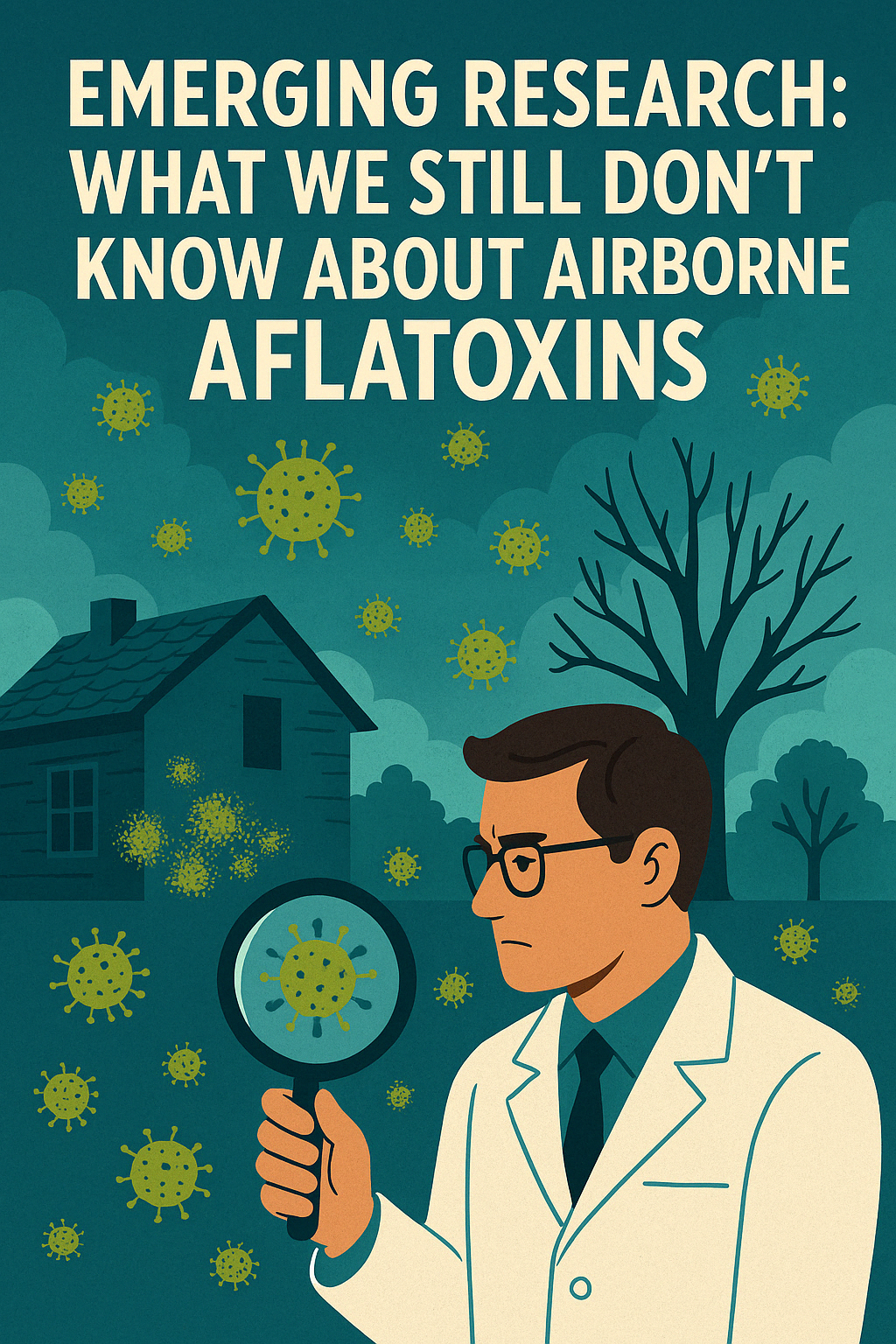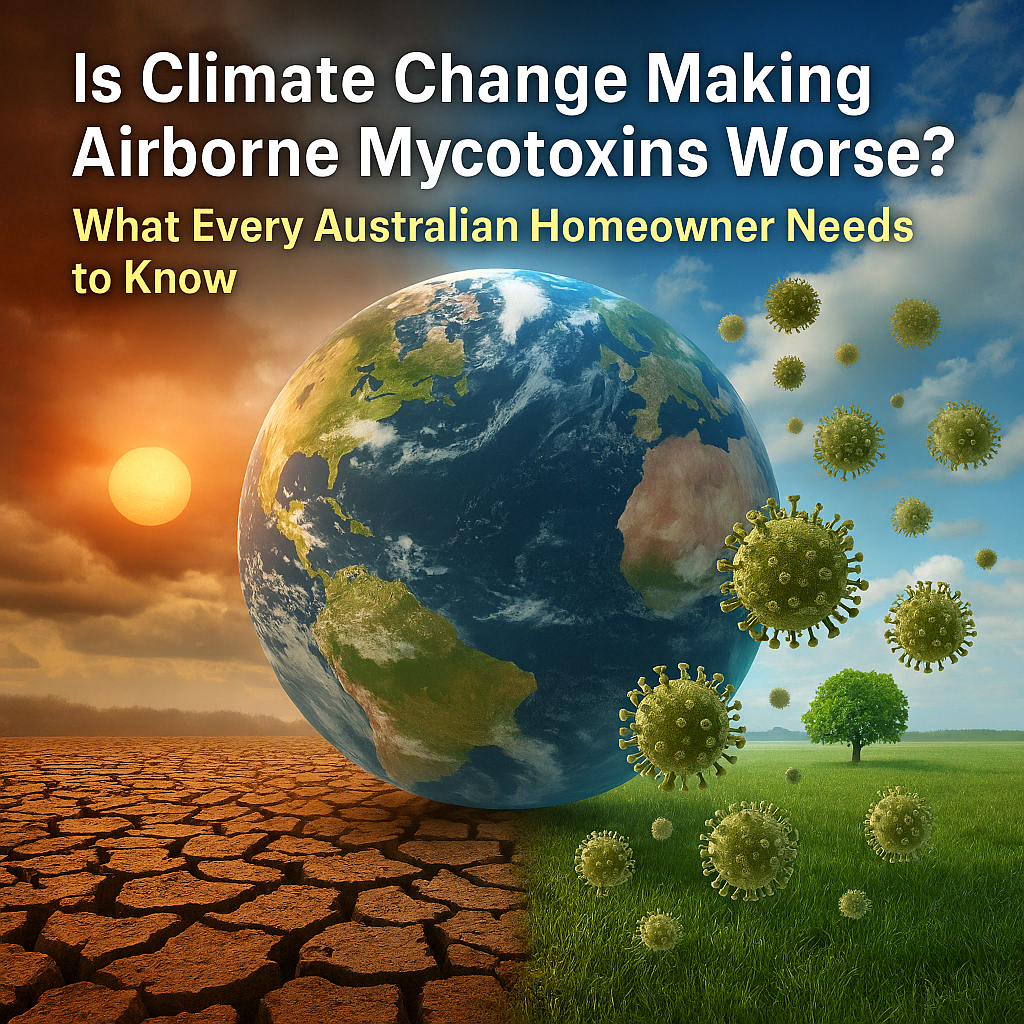
Are Airborne Aflatoxins More Dangerous Than We Thought? Emerging Research Reveals the Unknowns
Introduction
Mould is not just a cosmetic nuisance. It’s a living organism that, when left unchecked, releases toxic by-products into your environment. One of the most concerning of these by-products is aflatoxin—a dangerous type of airborne mycotoxin.
While we know that ingesting aflatoxins through contaminated food is harmful, emerging research is beginning to uncover just how serious inhalation of airborne aflatoxins might be. The truth is, we still don’t know everything about these toxins. And what we don’t know could be putting people, pets, and properties at risk.
That’s why The Mould Group is at the forefront of monitoring, testing, and remediating airborne aflatoxins across Australia. Their work helps protect families, renovators, business owners, and cool room operators from hidden hazards.
What Are Airborne Aflatoxins and Why Are They Dangerous?
Aflatoxins are toxic compounds produced by certain moulds, especially Aspergillus flavus and Aspergillus parasiticus. These moulds are common in warm, humid environments—and when disturbed, they can release spores containing these toxins into the air.
While much research has focused on the ingestion of aflatoxins in contaminated food, recent studies suggest inhalation exposure may be equally dangerous. These toxins can enter the lungs, affect internal organs, and weaken the immune system over time.
How Can Airborne Aflatoxins Affect Your Health?
Researchers are still learning about the long-term health effects of inhaling aflatoxins, but early evidence points to some serious risks:
Chronic respiratory irritation
Allergic reactions and persistent coughing
Fatigue and immune suppression
Liver inflammation and toxicity
Increased cancer risk (especially liver cancer)
People living or working in mould-prone spaces—like poorly ventilated homes or cool rooms—may be breathing in these toxins daily without realising.
What Triggers the Release of Aflatoxins Into the Air?
Environmental factors play a big role in how mould grows and when it releases toxins. The key causes include:
High humidity and damp conditions
Poor ventilation in enclosed spaces
Disturbance during renovations or cleaning
Storage of spoiled grain or organic materials indoors
Unmaintained cool rooms or sheds
When spores are disrupted, aflatoxins can become airborne and spread rapidly—especially in older buildings or hidden cavities.
How Can You Test for Airborne Aflatoxins in Your Home?
Because aflatoxins are invisible and odourless, testing is essential. Common testing methods include:
Air sampling to collect particles over time
Surface swabbing of suspected mould sites
Dust testing to check for long-term exposure
Moisture mapping and thermal imaging to locate hidden mould
Professional lab analysis of biological samples
The Mould Group uses a combination of these methods to detect airborne aflatoxins before they become a health crisis.
What Are the Best Ways to Remove Airborne Aflatoxins?
Once aflatoxins are present, standard cleaning products aren’t enough. Safe remediation requires:
HEPA-filtered air scrubbers to remove particles
Industrial vacuums to clean affected areas
Safe removal of contaminated drywall, insulation, or carpet
Application of non-toxic anti-mould treatments
Sealing and ventilating previously affected spaces
Attempting DIY removal can worsen contamination. For lasting safety, always hire licensed remediation professionals.
How Can You Prevent Mycotoxin Contamination at Home or Work?
Prevention is the best strategy. These habits can protect your property from airborne aflatoxins:
Fix leaks and roof issues promptly
Use dehumidifiers in wet or enclosed rooms
Ventilate kitchens, bathrooms, and cool rooms
Store food and grain in sealed, dry containers
Schedule regular mould inspections—especially in older or water-damaged properties
Keeping your environment dry, clean, and well-ventilated is your first line of defence.
Who Is Most at Risk from Airborne Aflatoxins?
Certain people and groups are more vulnerable to aflatoxin exposure:
Children and infants with developing lungs
Elderly individuals with weaker immune systems
Renovators and builders disturbing old structures
Pet owners with indoor animals near mould
People working in food storage or cool rooms
Tenants in older buildings or flood-prone regions
Even a small exposure, over time, can lead to serious health issues—especially when it goes undetected.
Why a Full Mould Inspection Is Essential in 2025
As we explored in Mould Testing vs Full Inspection: What’s the Cost Difference in Brisbane?, DIY kits often give a false sense of security. They don’t test for airborne aflatoxins—and usually miss what’s happening behind walls or ceilings.
The Mould Group provides full inspections that include:
Airborne aflatoxin testing
Surface and dust sampling
Thermal imaging to spot hidden mould
Custom reports and remediation plans
This level of detail is what keeps homes and businesses truly safe.
What’s Next? Planning for a Safer, Healthier Environment
Looking to learn more about pricing, safety, and testing options?
The next blog in this series—How Much Does a Mould Inspection Cost in Brisbane? A Complete Breakdown—goes into detail on what to expect when you book a professional mould assessment.
Whether you’re a homeowner, renovator, or property manager, it’s a must-read before you take your next step.
If you suspect airborne mycotoxins in your home, don’t wait.
Contact The Mould Group today for expert testing and remediation.
🔗 Want updates and expert tips? Visit our Facebook page: The Mould Group Facebook Page
📝 Next blog in this series:
Coming soon…
Recent Post
Emerging Research
Are Airborne Aflatoxins More Dangerous Than We Thought? Emerging Research Reveals the Unknowns Introduction Mould is not just a cosmetic nuisance. It’s a living organism that, when left unchecked, releases toxic by-products into your environment. One of the most concerning of these by-products is aflatoxin—a dangerous type of airborne mycotoxin. While we know that ingesting […]
Climate Change and Airborne Mycotoxins
Is Climate Change Making Airborne Mycotoxins Worse? What Every Australian Homeowner Needs to Know Introduction Mould is more than just an unsightly problem—it’s a biological hazard that can compromise your health and damage your property. As it grows, it can release dangerous toxins into the air called mycotoxins. When these mycotoxins become airborne, they can […]
Airborne Aflatoxins and Animals
Are Your Pets or Livestock at Risk? Understanding Airborne Aflatoxins and Animals Introduction Mould is not just a concern for homes and people—it also poses a serious threat to animals. When mould spreads in barns, sheds, feed storage areas, or even inside homes, it can release aflatoxins—a dangerous type of airborne mycotoxin. These toxins can […]




